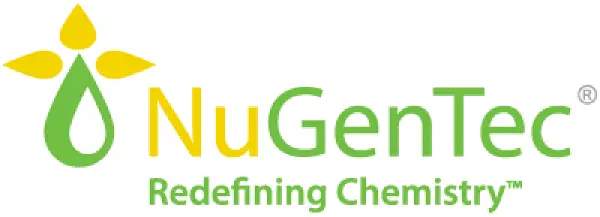January 25, 2019 FluoSolv® CAS exceeds the requirements for SCAQMD Certified Clean Air Solvent

The South Coast Air Quality Management District has strict requirements for chemical safety. Among the most difficult to attain is the certification for Clean Air Solvent. FluoSolv CAS (which stands for Clean Air Solvent), not only meets the requirements for SCAQMD Clean Air Solvent Certification, it exceeds it. The certification, according to SCAQMD, requires that a solvent meets the following requirements:
- VOC concentration is no more than 25 grams of VOC per liter of material, as applied;
- Composite vapor pressure is no more than 5 mm Hg of VOC at 20°C (68°F);
- Reactivity is not higher than toluene; and,
- Contains no compounds classified as Hazardous Air Pollutants (HAPs) by the federal Clean Air Act, Ozone-Depleting Compounds (ODCs), or Global Warming Compounds (GWCs).
In addition to meeting all of these requirements, FluoSolv® CAS has zero VOCs, which is less than the 25 grams per liter required by SCAQMD. This article will explain why VOCs and Ozone-Depleting Compounds are hazardous to the planet.
What is a VOC?
VOCs (Volatile Organic Compounds) are molecules emitted as a gas from a solid or liquid and have harmful effects. VOCs react with oxides of nitrogen in the presence of sunlight to create ground-level ozone, which is the main component of smog. These precursors to ground-level ozone have far-ranging and long-lasting effects on human health and the environment.
Additionally, short-term exposure to VOCs can present health risks such as irritation of the eyes, nose, and throat, in addition to headaches while long-term exposure can lead to cancer and permanent liver, kidney, or nervous system damage. For these reasons, communities have concerns about the presence of VOCs in industries and NuGenTec has opted to formulate FluoSolv CAS without VOCs.
A Brief History of Ozone Depleting Compounds
When Thomas Midgely, Jr., improved the method of synthesis of CFC’s (chlorofluorocarbons) in the 1920’s, he popularized their use as a refrigerant with the brand name Freon; even going so far as to demonstrate its safety to the American Chemical Society by inhaling the gas and using it to blow out a candle. CFC-use became widespread and the direct effects of refrigerants on human health were seemingly mitigated. Unfortunately, CFC’s weren’t as perfect as they seemed - in the 1970’s, evidence of CFC’s effects on the stratospheric ozone became realized and made its way into scientific publications that led to an eventual ban on CFC production.
When the vapor of CFC’s or HCFC’s (hydrochlorofluorocarbon) reaches the stratosphere, the molecules undergo a reaction stimulated by sunlight. This causes halogen ions to break away from the molecule and disperse. When these halogens interact with ozone (O3), which acts as a shield from the harmful ultraviolet rays of the sun, ozone is broken down into oxygen (O2). The thinning of the stratospheric ozone layer contributes to the rising temperatures and melting of polar icecaps while creating a positive feedback loop for the degradation of CFC’s and HCFC’s and ozone depletion.
It would seem that human chemical processes tend to interact with ozone in ways that are detrimental to human health. While CFC’s and HCFC’s deplete ozone in the stratosphere, where ozone is beneficial, VOC’s (volatile organic chemicals) add ozone to the troposphere, or the ground level, where it is harmful.
What are Global Warming Compounds?
Global warming compounds, also referred to as greenhouse gases, increase the temperature of the atmosphere and contribute to climate change. Global warming compounds essentially trap energy that would otherwise escape the atmosphere, acting like a blanket, insulating the earth and speeding climate change. Their affinity for energy absorption is the main cause of this effect and this is measured with a standard called global warming potential.
Global warming potential (GWP) is a measurement that compares the impacts of greenhouse gases in warming the planet. GWP is measured relative to the effects of CO2. Namely, the energy that one ton of CO2 gas will absorb over a time period is arbitrarily designated a value of 1, and other gases are given a value relative to that of CO2. For instance, methane has an estimated GWP of 28-36 over 100 years, according to the EPA, which means that one ton of methane absorbs an estimated 28-36 times the amount of energy that one ton of CO2 will absorb over the same time period. A high GWP tells us that the gas in question will readily keep energy from escaping the atmosphere and contribute greatly to climate change.
What is a Hazardous Air Pollutant?
Hazardous air pollutants are gases that are known to have severe risks to human health, such as cancer and other serious health problems. These chemicals are dangerous for the work environment and for the community at large. Regulations are cutting back on the use of hazardous air pollutants and industry leaders are responding by finding safer solvents.
FluoSolv Clean Air Solvent
FluoSolv CAS is an SCAQMD Certified Clean Air Solvent and contains no volatile organic compounds, ozone depleting chemicals, global warming compounds, or hazardous air pollutants. Click here to learn more about FluoSolv CAS.
NuGenTec: Redefining Chemistry
If you are seeking healthier, more environmentally responsible, and less costly alternatives for your industrial processes, contact NuGenTec today.
|



